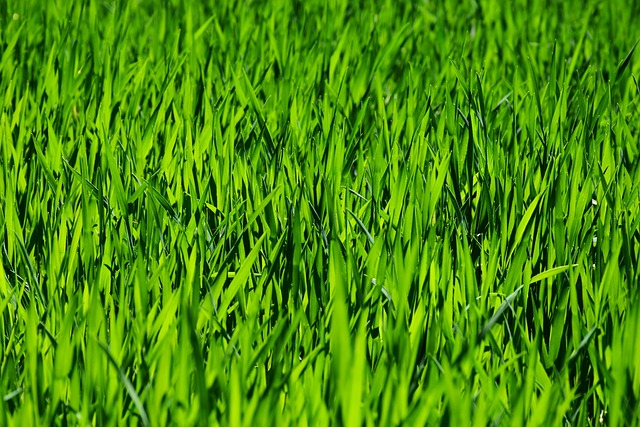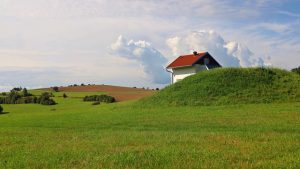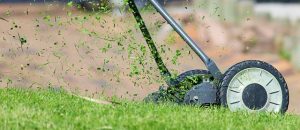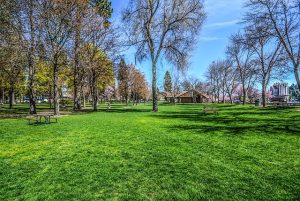Optimal Fertilization and Weed Management for Lush Landscapes: A Guide to Healthy Lawns
Effective lawn care and landscaping hinges on a balanced approach that includes tailored fertilizati…….

Effective lawn care and landscaping hinges on a balanced approach that includes tailored fertilization, strategic timing, and targeted weed control to maintain a lush, green turf. For optimal grass health, it's crucial to apply the right mix of nitrogen for leaf growth, phosphorus for root strength, and potassium for overall vitality. Different grass types have unique nutrient needs, so customization is key. Early spring fertilization accelerates green-up, while late fall applications help prepare the lawn for winter. Weed control requires a strategic approach, using herbicides that protect both the lawn and the environment, timed to disrupt the weed lifecycle. Preventative measures such as soil preparation, consistent mowing, and surveying for new weeds help ensure grass outcompetes unwanted plants. Integrating native plants and trees with mulching for moisture retention and weed suppression complements these efforts, promoting biodiversity and conserving resources in a low-maintenance, eco-friendly landscape. This comprehensive approach to lawn care and landscaping ensures a visually appealing and sustainable outdoor space that supports the local ecosystem.
Embark on a journey through the green expanse of your yard with an insightful exploration into lawn care and landscaping. This article delves into the art of lawn fertilization and strategic weed control, guiding you to cultivate a lush, thriving turf that stands as both a sanctuary and a testament to meticulous stewardship. From understanding key nutrients for vibrant grass to mastering the identification and management of common lawn invaders, we’ll integrate these practices with your landscaping design for a harmonious outdoor environment. Join us to transform your lawn into an oasis of beauty and health, enhancing your living space and promoting ecological balance.
- Understanding Lawn Fertilization: Key Nutrients for a Vibrant Turf
- Strategic Weed Control: Identifying and Managing Common Lawn Invaders
- Integrating Lawn Care and Landscaping for a Harmonious Outdoor Environment
Understanding Lawn Fertilization: Key Nutrients for a Vibrant Turf

A lush, green lawn is a hallmark of well-maintained landscapes, and understanding lawn fertilization is central to achieving this. Lawn Care and Landscaping professionals emphasize that for a vibrant turf, it’s crucial to provide the right balance of nutrients. Nitrogen plays a pivotal role in promoting leaf growth, ensuring the grass blades are robust and thick. Phosphorus is vital for root development, giving your lawn a strong foundation that can withstand foot traffic and environmental stressors. Potassium aids in overall health, disease resistance, and strength against pests.
For optimal Lawn Care and Landscaping outcomes, it’s essential to tailor the fertilization program to the specific type of grass you have, as different species absorb nutrients at varying rates. Timing your applications throughout the growing season is also key; early spring feedings encourage rapid green-up, while late fall applications help the lawn store energy for a robust start in the next growing season. By understanding and applying these principles of lawn fertilization, homeowners can maintain a healthy and resilient lawn that withstands the test of time and weather conditions.
Strategic Weed Control: Identifying and Managing Common Lawn Invaders

A well-maintained lawn serves as a visual delight and a testament to meticulous lawn care practices, which include strategic weed control. Effective management of common lawn invaders requires an understanding of their growth patterns and habitats. Lawn owners should be vigilant in identifying broadleaf weeds like dandelions, clover, and plantain, as well as grassy weeds such as crabgrass and nutsedge that can overrun a lush landscape if left unchecked. Implementing a tailored weed control program is essential to maintaining a healthy lawn; this involves selecting the appropriate herbicides that target these pests without adversely affecting the desirable turf grasses. Timing applications correctly, based on the weed life cycle, enhances efficacy and minimizes environmental impact.
Integrating preventative measures into your lawn care and landscaping routine is a proactive approach to managing weeds. This includes proper soil preparation, optimal fertilization practices that promote strong grass growth, and maintaining an appropriate mowing height for the type of grass in your lawn. By ensuring that your turf has the necessary nutrients and sunlight, you can create an environment less conducive to weed growth. Regular scouting of your lawn for new or emerging weeds allows for timely interventions, reducing the need for more aggressive control measures later on. With a combination of proactive maintenance and targeted weed control strategies, your lawn care and landscaping efforts will yield a vibrant, weed-free lawn that remains a focal point of your outdoor space.
Integrating Lawn Care and Landscaping for a Harmonious Outdoor Environment

Integrating lawn care and landscaping enhances the aesthetic appeal and health of your outdoor environment, creating a harmonious and cohesive space. A well-maintained lawn serves as a foundational canvas for your landscape design, with proper fertilization ensuring a lush, green turf that can complement various plantings and garden features. Fertilizers rich in nitrogen, phosphorus, and potassium promote grass growth and vigor, while also supporting the root system’s development. This balance between nutrient supply to the lawn and careful consideration of landscape elements allows for a sustainable ecosystem where both turf and ornamental plants can thrive.
In landscaping, thoughtful design that incorporates native plants and trees alongside your fertilized lawn can create a low-maintenance, environmentally friendly setting. These plants are naturally adapted to the local soil and climate conditions, reducing the need for additional care while supporting biodiversity. Additionally, the integration of mulch around plantings not only conserves moisture but also suppresses weeds, further complementing your lawn care regimen. By harmonizing these two practices, homeowners can achieve a beautifully landscaped outdoor space that is both functional and visually pleasing, with the added benefit of minimizing resource use and environmental impact.
Effective lawn care and landscaping practices are pivotal in maintaining a lush, resilient turf that thrives throughout the seasons. This article has delved into the intricacies of lawn fertilization, underscoring the importance of key nutrients for a vibrant turf, and provided strategic insights on weed control to safeguard against common invaders. By integrating these approaches with thoughtful landscaping, homeowners can achieve a harmonious outdoor environment that enhances both aesthetics and functionality. A well-nurtured lawn not only elevates the visual appeal of one’s property but also contributes to ecological health. Lawn care and landscaping, when approached holistically, can create an inviting space that benefits people and nature alike.







